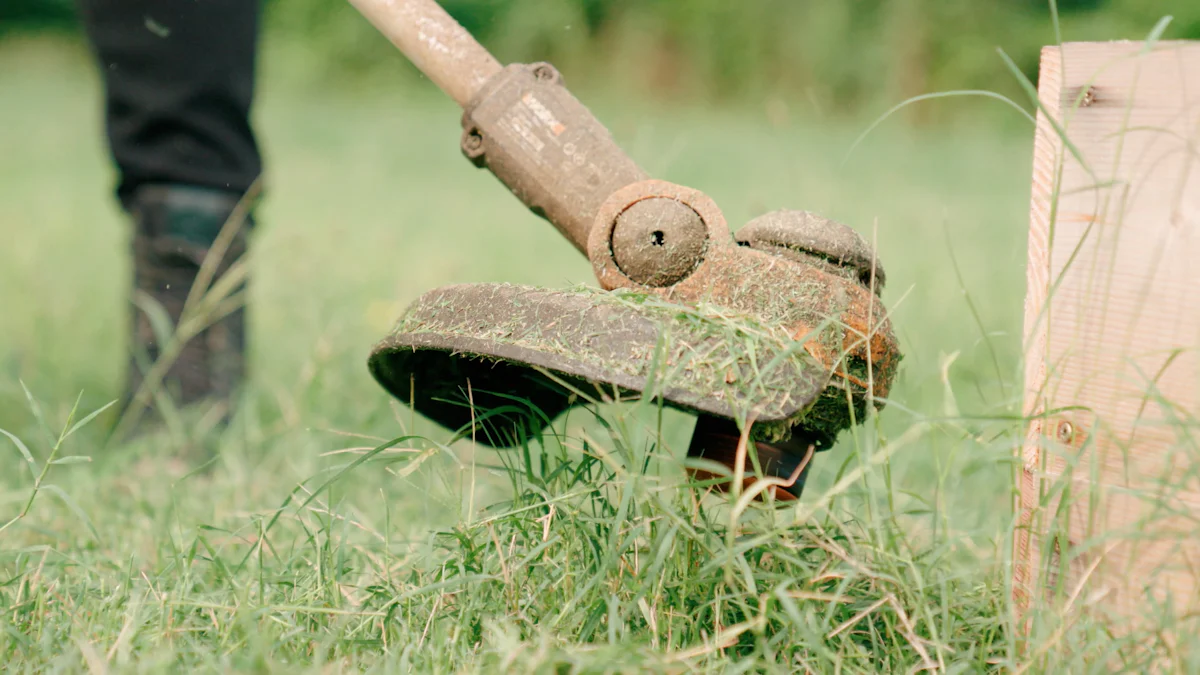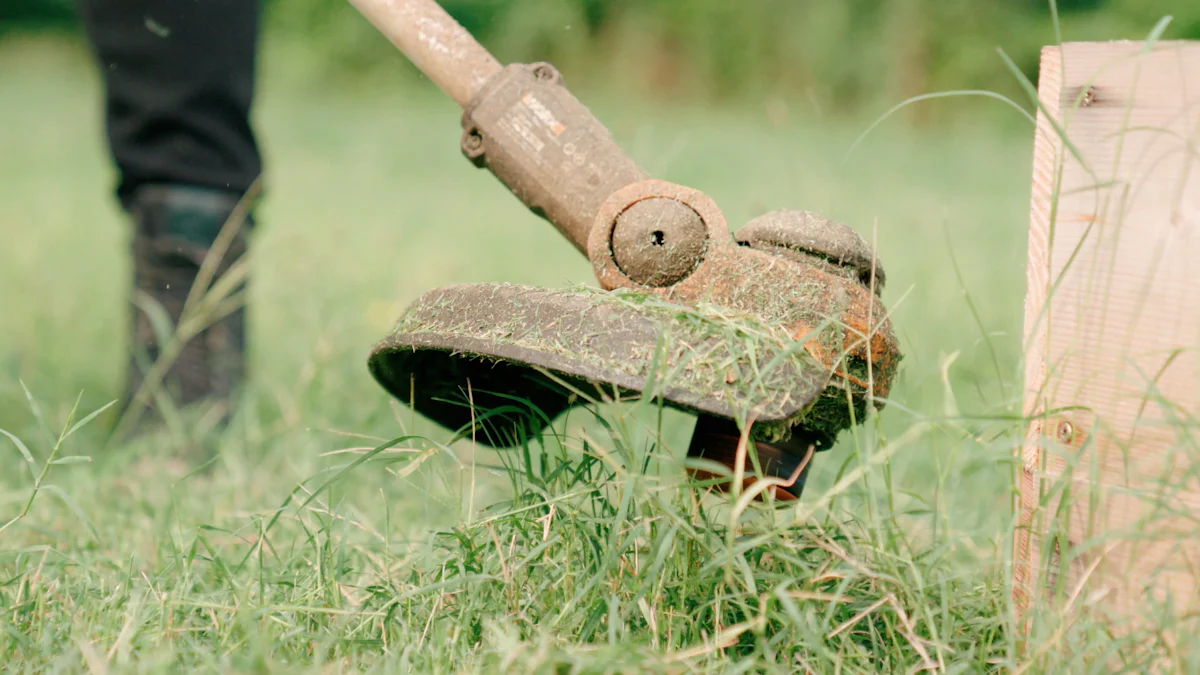
Choosing the right brush cutting tool can make a significant difference in your outdoor maintenance tasks. The variety of brush cutting tools available ranges from manual hand tools to powerful gas-powered machines. Using the correct tool not only improves efficiency but also ensures safety. For example, an efficient brush cutting machine can clear an acre of brush per hour. A customer shared that the Peco Brush Blazer cleared a ½ acre kill plot in a few hours, a task that would have taken a week with other tools. Selecting the perfect brush cutting tool can greatly enhance your work.
Understanding Different Types of Brush Cutting Tools

Manual Brush Cutters
Manual brush cutters offer simplicity and affordability. These tools require physical effort but provide precise control.
Hand Tools
Hand tools include pruners, shears, and loppers. These tools work well for small areas and light vegetation. Hand tools allow for detailed trimming and shaping.
Machetes
Machetes excel at cutting through thick brush and tall grass. These tools require strength and skill. Machetes are ideal for clearing paths and small plots.
Gas-Powered Brush Cutters
Gas-powered brush cutters deliver high power and versatility. These machines handle tough vegetation and large areas efficiently.
Two-Stroke Engines
Two-stroke engines offer a good balance of power and weight. These engines provide rapid acceleration and high torque. Two-stroke engines suit intermediate to heavy-duty tasks.
Four-Stroke Engines
Four-stroke engines run cleaner and quieter than two-stroke engines. These engines offer better fuel efficiency and lower emissions. Four-stroke engines handle heavy-duty brush cutting with ease.
Electric Brush Cutters
Electric brush cutters provide a quieter and more eco-friendly option. These machines are suitable for residential use and smaller areas.
Corded Electric
Corded electric brush cutters offer continuous power without the need for refueling. These tools are lightweight and easy to maneuver. Corded electric brush cutters work best for small to medium-sized yards.
Battery-Powered
Battery-powered brush cutters provide mobility and convenience. These tools eliminate the need for cords and fuel. Battery-powered brush cutters suit small to medium tasks and offer quieter operation.
Key Factors to Consider
Nature of the Task
Type of Vegetation
Different brush cutting tools excel with various types of vegetation. Dense underbrush requires a powerful tool. Light grass and weeds need less power. Choose a tool that matches the vegetation type. For thick brush, a gas-powered cutter works best. For light trimming, manual or electric tools suffice.
Size of the Area
The area size influences the choice of brush cutting tools. Large areas demand high-power tools. Small yards can use manual or battery-powered cutters. A gas-powered cutter covers more ground quickly. Electric tools suit smaller spaces due to limited range.
User Experience and Comfort
Weight and Balance
Comfort matters when using brush cutting tools for extended periods. Heavy tools cause fatigue. Lightweight tools offer ease of use. Balance affects control and efficiency. Well-balanced tools reduce strain on the body. Test the tool’s weight and balance before purchase.
Handle Design
Handle design impacts user comfort. Ergonomic handles provide better grip and control. Bicycle handles offer stability for large areas. Loop handles suit precision work in tight spaces. Choose a handle design that fits your needs and comfort level.
Budget Considerations
Initial Cost
Initial cost varies among brush cutting tools. Manual tools are affordable. Gas-powered cutters cost more due to engine complexity. Electric tools fall in the mid-range. Consider your budget when choosing a tool. High initial cost often means better performance and durability.
Maintenance and Operating Costs
Maintenance and operating costs affect long-term expenses. Gas-powered tools require fuel and regular maintenance. Electric tools need battery replacements or electricity. Manual tools have minimal maintenance costs. Factor in these costs when selecting a tool.
Safety and Best Practices

Personal Protective Equipment (PPE)
Eye Protection
Always wear safety glasses when operating brush cutting tools. Flying debris can cause serious eye injuries. Safety glasses with side shields offer additional protection. For enhanced safety, use a full-face shield over the glasses.
Hearing Protection
Brush cutting tools produce loud noise. Prolonged exposure can damage hearing. Use earplugs or earmuffs to protect your ears. Ensure the hearing protection fits well and provides adequate noise reduction.
Gloves and Clothing
Wear gloves to protect your hands from cuts and abrasions. Choose gloves made of durable material. Long-sleeved shirts and long pants provide additional protection. Avoid loose clothing that can get caught in the machine. Wear sturdy boots to protect your feet.
Safe Operating Procedures
Pre-Use Inspection
Inspect the brush cutting tool before each use. Check for any damage or wear. Ensure all parts are secure and functioning properly. Replace any damaged components immediately. A thorough inspection prevents accidents and ensures efficient operation.
Proper Handling Techniques
Hold the brush cutting tool firmly with both hands. Maintain a stable stance to avoid losing balance. Keep the cutting area clear of bystanders. Move the tool steadily and avoid sudden movements. Follow the manufacturer’s instructions for safe operation.
Maintenance and Care
Cleaning and Storage
Clean the brush cutting tool after each use. Remove any debris and dirt from the blades and engine. Store the tool in a dry, secure place. Proper cleaning and storage extend the tool’s lifespan and ensure optimal performance.
Regular Maintenance Checks
Perform regular maintenance checks on the brush cutting tool. Sharpen the blades as needed. Check the fuel and oil levels for gas-powered tools. Replace worn-out parts promptly. Regular maintenance keeps the tool in good working condition and prevents breakdowns.
Choosing the right brush cutting tool can transform your outdoor tasks. Consider the type of vegetation and the size of the area. Prioritize user comfort by evaluating weight, balance, and handle design. Budget for both initial and ongoing costs. Always follow safety practices and maintain your tool regularly. A well-chosen brush cutter enhances efficiency and safety. For instance, a Brush Blazer cleared a ½ acre in hours, saving days of labor. Make an informed decision to achieve the best results in your brush cutting endeavors.
See Also
Scooter Upgrades: High-Quality Parts for Maximum Performance
Winter Bliss: Stay Warm and Cozy with Soft Socks
Dive into Diverse Sock Styles for All Genders
